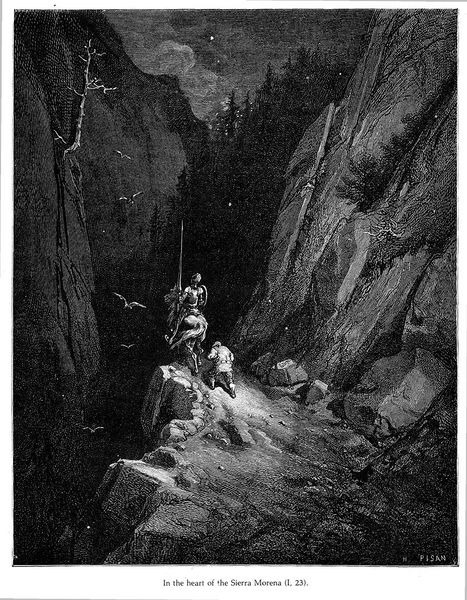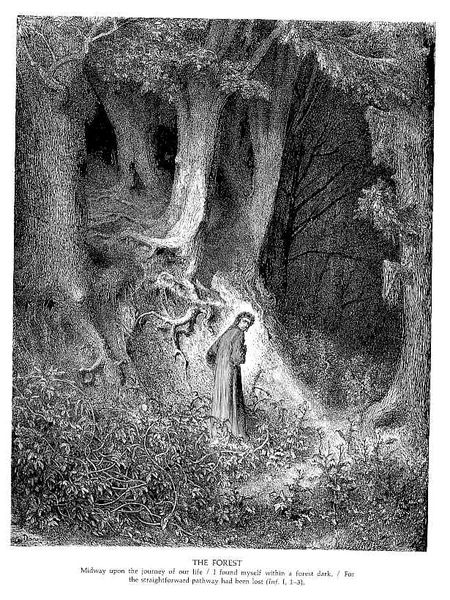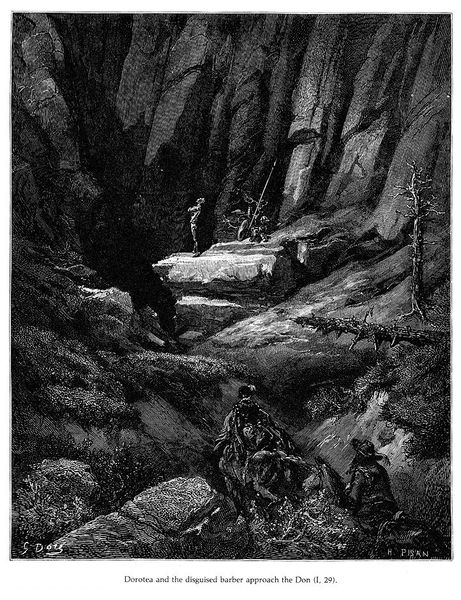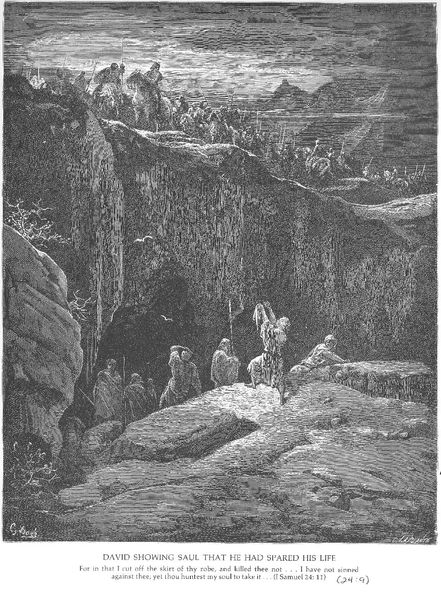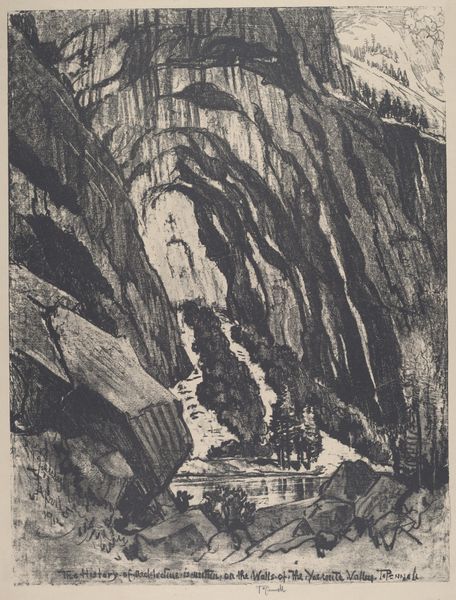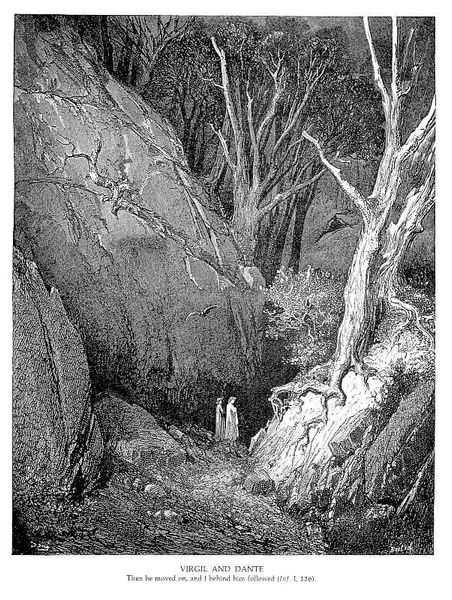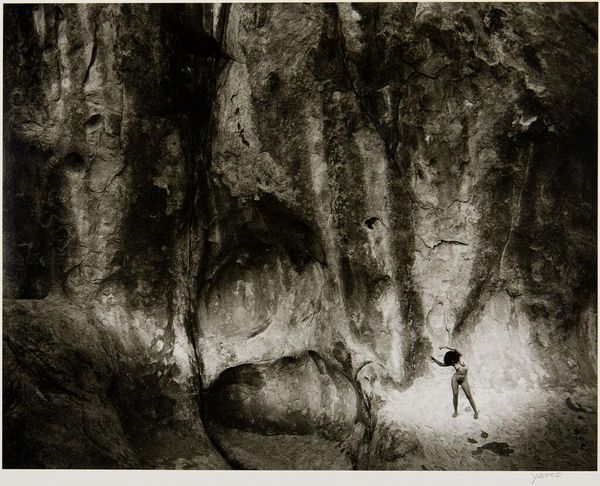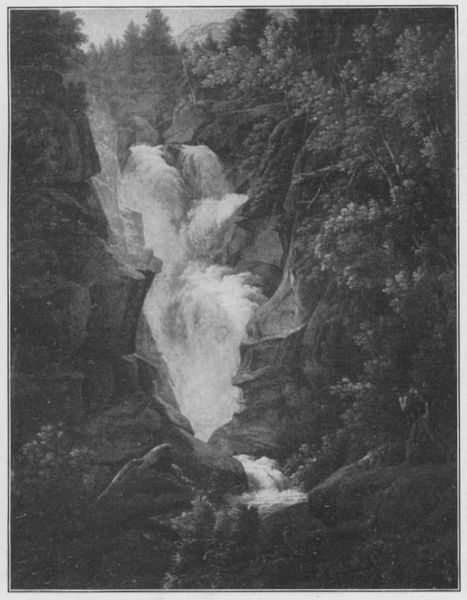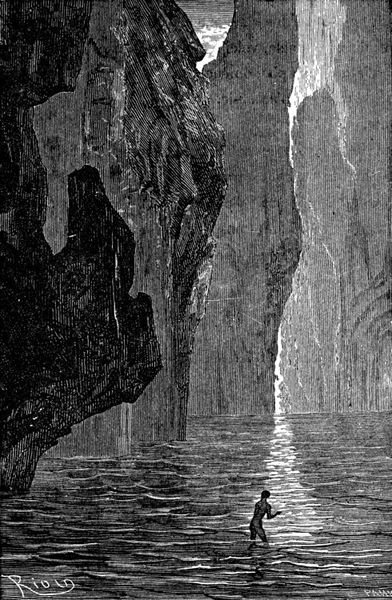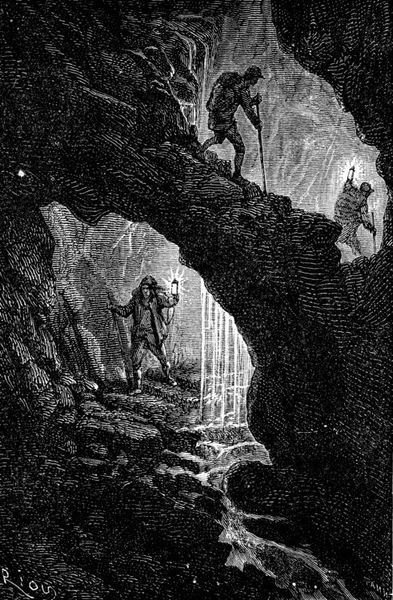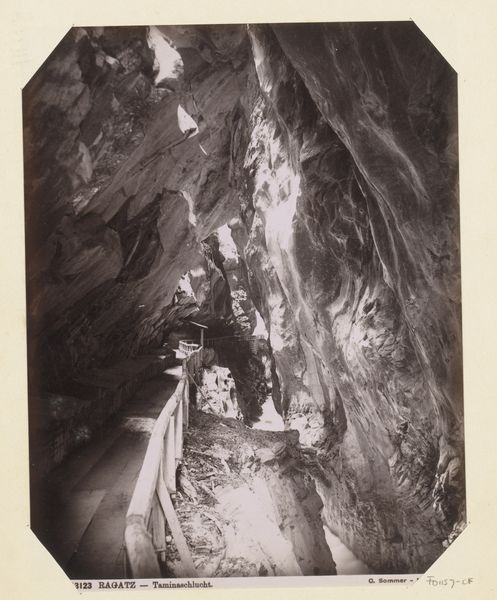
Copyright: Public domain
Editor: This engraving, "Journey to the Center of the Earth," made in 1864 by Edouard Riou, illustrates a scene of intrepid explorers rappelling into a dark chasm. It’s overwhelmingly dramatic; the sheer scale is terrifying. How does this image engage with its historical moment? Curator: This image speaks volumes about the 19th century's fascination with science and exploration, but also its relationship with Romanticism. Didactic imagery flourished during this period. Consider the social and political context; exploration narratives, particularly those with scientific underpinnings, were potent tools. What role do you think visual depictions like this one played in shaping public opinion regarding scientific expeditions? Editor: It must have stoked the public imagination! To see these perilous landscapes probably encouraged a sense of national pride in scientific advancement, right? But why this medium – the detailed, monochrome engraving? Curator: Precisely. Engravings, like photography, democratized imagery; they brought exotic locales and scientific discovery to a wider audience. Also, note the sharp contrast and detail; it lends an air of scientific accuracy and objectivity. Doesn’t that sharpness contrast with the undeniably Romantic feel? Editor: Yes, the stark, dangerous landscape and the tiny figures emphasize the power of nature over man – but nature framed by supposedly objective documentation. It's a compelling tension. I hadn’t thought of that combination of Romanticism and accessible, "scientific" imagery being so politically potent. Curator: Exactly. Art like this wasn't just aesthetically pleasing, it played a vital role in shaping a nation’s perception of progress and its place in the world. And that applies today as well! Editor: Right. Thank you, that gave me a lot to consider when thinking about how art influences our cultural perspectives.
Comments
No comments
Be the first to comment and join the conversation on the ultimate creative platform.
